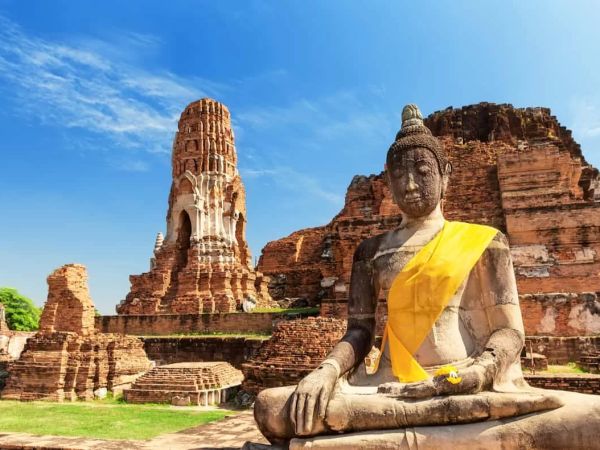Famous Temples in Kyoto, Japan – Explore the Top Historical Sites
- 1. Kinkaku-ji – The Golden Pavilion
- 2. Fushimi Inari-taisha – The Iconic Red Torii Gates
- 3. Kiyomizu-dera – A Landmark of Kyoto
- 4. Ginkaku-ji – The Silver Pavilion
- 5. Nanzen-ji – A Tranquil Retreat
1. Kinkaku-ji – The Golden Pavilion
One of the most famous temples in Kyoto, Kinkaku-ji, also known as the Golden Pavilion, is a stunning Zen Buddhist temple covered in gold leaf. Located in the northern part of Kyoto, this temple is a visual masterpiece set amidst a beautifully landscaped garden and a tranquil pond. The temple's golden exterior reflects off the surrounding water, creating a breathtaking image that has become one of the most photographed spots in Japan. Visiting Kinkaku-ji provides a serene and contemplative experience, with its peaceful surroundings making it a must-see for anyone exploring Kyoto.
2. Fushimi Inari-taisha – The Iconic Red Torii Gates
Fushimi Inari-taisha is another one of Kyoto's most famous landmarks. Known for its thousands of red Torii gates that lead up Mount Inari, this Shinto shrine is an unforgettable sight. The Torii gates, arranged in rows, create a seemingly endless path that weaves through the forested hillside. Hiking to the summit of Mount Inari offers a rewarding experience, with scenic views of the city and beautiful surroundings. Visitors can explore the shrine’s various smaller shrines along the way, each adding to the unique spiritual atmosphere of the area. A visit to Fushimi Inari-taisha provides not only a glimpse into Japan’s religious practices but also an opportunity to immerse oneself in the beauty of nature.
3. Kiyomizu-dera – A Landmark of Kyoto
Kiyomizu-dera, a UNESCO World Heritage Site, is one of the most iconic temples in Kyoto. The temple is famous for its large wooden stage that juts out over the hillside, providing stunning views of the cherry blossoms in spring and the vibrant autumn leaves. The temple's name, which translates to “Pure Water Temple,” comes from the Otawa Waterfall that runs through the temple grounds. Kiyomizu-dera offers a peaceful and spiritual experience, and its cultural significance in Kyoto’s history is immense. Visitors will find themselves captivated by the architecture and the breathtaking views that surround the temple.
4. Ginkaku-ji – The Silver Pavilion
Ginkaku-ji, or the Silver Pavilion, is often compared to its golden counterpart, Kinkaku-ji, though it is not actually covered in silver. Despite this, Ginkaku-ji is equally captivating, featuring beautiful Zen gardens and a serene atmosphere. Located in the eastern part of Kyoto, Ginkaku-ji was originally built as a retirement villa for the shogun Ashikaga Yoshimasa in the 15th century. The temple's gardens, especially the famous dry sand garden, are designed to evoke a sense of simplicity and tranquility, making it an ideal spot for quiet reflection. Ginkaku-ji is a perfect example of the understated beauty that Kyoto is known for.
5. Nanzen-ji – A Tranquil Retreat
Nanzen-ji is a large and historic Zen temple in Kyoto that offers a peaceful escape from the busier tourist areas. Located at the base of the Higashiyama Mountains, the temple complex includes a variety of buildings, including the impressive Sanmon gate, which offers a panoramic view of the city. The temple’s gardens are beautifully maintained, and the surrounding forested area provides a sense of tranquility. Nanzen-ji is an ideal place to take a break from the crowds and experience the calm atmosphere that Kyoto’s temples are famous for.
Kyoto’s temples offer a deep dive into Japan’s spiritual heritage and architectural beauty. Whether you are gazing at the golden splendor of Kinkaku-ji or walking through the Torii gates at Fushimi Inari-taisha, each temple offers a unique experience. Kyoto is truly a city where tradition, nature, and history converge, making it one of Japan’s most captivating destinations. Ready to explore Kyoto's famous temples and more? Visit How to Travel the World for your next adventure in Japan.






